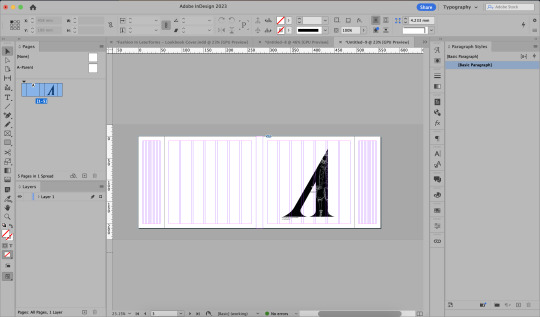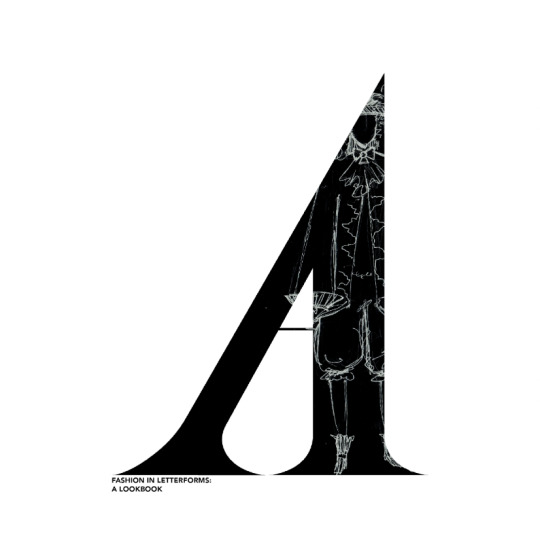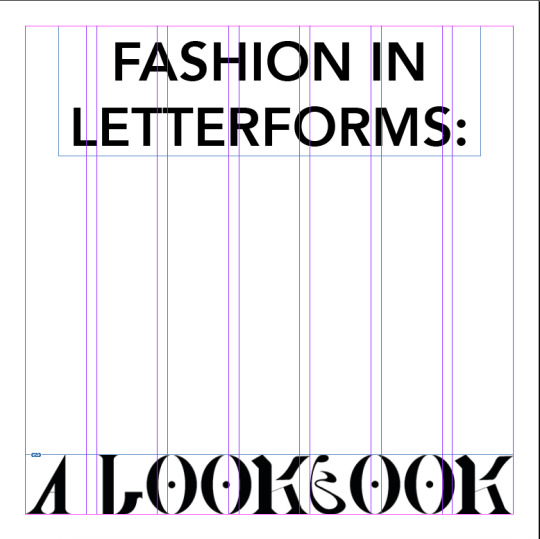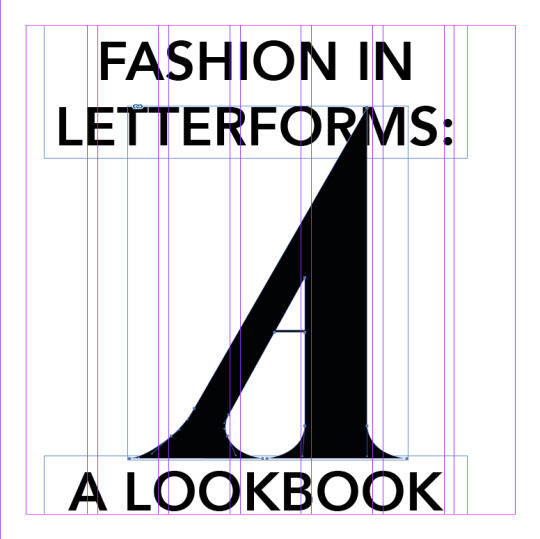Don't wanna be here? Send us removal request.
Photo


Proof of hand in
This is the proof of my hand in.
0 notes
Photo



Process Book - CVL
This is my finalised process book that I created for this unit, within it I collected everything that was created from the unit including the EP//M live brief.
This process book was designed within Adobe Indesign in a landscape format.
The size of the book:
Width: 250mm
Height: 200mm
Included within it is also the bibliography and the final evaluation that I wrote for the unit.
0 notes
Text
Final Thoughts
I really enjoyed this project, it was very stressful at times as I felt that I may have not managed my time as well as I should've and there was some mistakes made throughout however I think that the work that I have created within this unit is really interesting. I can say that I have confidently completed the work that I set my self in my learning agreement at a high standard.
Of course there are things that I could improve but I am happy to hand in the work at this level.
0 notes
Text
Bibliography
Reference list
blog.ocad.ca. (n.d.). 1960s – Typography Development And Evolution. [online] Available at: http://blog.ocad.ca/wordpress/visd2004-fw2020-001-f/1960s/ [Accessed 10 May 2023].
CBA (2020). 2010-2019: A DECADE IN TYPOGRAPHY. [online] cba-design. Available at: https://cba-design.com/italy/en/insights/2010-2019-a-decade-in-typography-2/ [Accessed 10 May 2023].
Clark, C. (n.d.). Design through the Decades | The 1970’s. [online] Brisbane Digital Agency | Hello Creative Agency. Available at: https://www.hellocreativeagency.com/blog/design-through-the-decades-the-1970s [Accessed 10 May 2023].
Fashion-Era (n.d.). Fashion Eras and Clothing Style Names Fashion-Era. [online] Fashion-Era. Available at: https://fashion-era.com/fashion-history/fashion-eras [Accessed 9 May 2023].
Kirilov, K. and Petroussenko, N. (2019). History and Evolution of Typography - Extended. [online] FontfabricTM Blog. Available at: https://www.fontfabric.com/blog/history-and-evolution-of-typography-fonts-timeline/ [Accessed 10 May 2023].
Mannering, S. (2019). What I learnt from typography in the 90s. [online] The Team. Available at: https://theteam.co.uk/blog/what-i-learnt-from-typography-in-the-90s/ [Accessed 10 May 2023].
McMahon, E. (n.d.). LibGuides: Fashion and Clothing History: East Asian Costume. [online] fitnyc.libguides.com. Available at: https://fitnyc.libguides.com/clothing/eastasiancostume [Accessed 9 May 2023].
MFA Boston (n.d.). Kenneth Paul Block. [online] Museum of Fine Arts Boston. Available at: https://www.mfa.org/exhibitions/kenneth-paul-block [Accessed 26 May 2023].
Petit, Z. (2020). 25 of Our Favorite New Typefaces of 2020. [online] Print Mag. Available at: https://www.printmag.com/design-inspiration/25-of-our-favorite-new-typefaces-of-2020/ [Accessed 10 May 2023].
Richardson, M. (2021). What Is Japanese Americana? | Japanese Americana Brands. [online] Grailed. Available at: https://www.grailed.com/drycleanonly/what-is-japanese-americana [Accessed 9 May 2023].
Stores, S. (2018). Research: 1980’s Typography. [online] SeraphaDesign @OCA. Available at: https://seraphadesign.wordpress.com/2018/12/04/research-1980s-typography/comment-page-1/#:~:text=Predominantly%20though%2C%20the%201980%27s%20offered [Accessed 10 May 2023].
Stussy (2022). Stüssy Summer ’22 Lookbook. [online] Stüssy UK. Available at: https://uk.stussy.com/blogs/features/stussy-summer-22-lookbook [Accessed 23 May 2023].
The Vintage Fashion Guild (2011). Vintage Fashion Guild : Fashion Timeline. [online] vintagefashionguild.org. Available at: https://vintagefashionguild.org/fashion-timeline/ [Accessed 9 May 2023].
THEMES. (n.d.). THEMES: Typography - A Brief History of 20th Century Type. [online] Available at: http://examthemes.blogspot.com/2012/11/typography-brief-history-of-20th.html [Accessed 10 May 2023].
Wikipedia Contributor (2019). Lookbook. [online] Wikipedia. Available at: https://en.wikipedia.org/wiki/Lookbook [Accessed 23 May 2023].
Wikipedia Contributors (2018). 1920s in Western fashion. [online] Wikipedia. Available at: https://en.wikipedia.org/wiki/1920s_in_Western_fashion [Accessed 9 May 2023].
Wikipedia Contributors (2019a). 1750–1775 in Western fashion. [online] Wikipedia. Available at: https://en.wikipedia.org/wiki/1750 [Accessed 9 May 2023].
Wikipedia Contributors (2019b). 1775–1795 in Western fashion. [online] Wikipedia. Available at: https://en.wikipedia.org/wiki/1775 [Accessed 9 May 2023].
Wikipedia Contributors (2019c). 1830s in Western fashion. [online] Wikipedia. Available at: https://en.wikipedia.org/wiki/1830s_in_Western_fashion [Accessed 9 May 2023].
Wikipedia Contributors (2019d). 1860s in Western fashion. [online] Wikipedia. Available at: https://en.wikipedia.org/wiki/1860s_in_Western_fashion [Accessed 9 May 2023].
Wikipedia Contributors (2019e). 1890s in Western fashion. [online] Wikipedia. Available at: https://en.wikipedia.org/wiki/1890s_in_Western_fashion [Accessed 9 May 2023].
Wikipedia Contributors (2019f). 1900s in Western fashion. [online] Wikipedia. Available at: https://en.wikipedia.org/wiki/1900s_in_Western_fashion [Accessed 9 May 2023].
Wikipedia Contributors (2019g). 1945–1960 in Western fashion. [online] Wikipedia. Available at: https://en.wikipedia.org/wiki/1945 [Accessed 9 May 2023].
Wikipedia Contributors (2019h). 1960s in Western fashion. [online] Wikipedia. Available at: https://en.wikipedia.org/wiki/1960s_in_fashion [Accessed 9 May 2023].
Wikipedia Contributors (2019i). 1990s in fashion. [online] Wikipedia. Available at: https://en.wikipedia.org/wiki/1990s_in_fashion [Accessed 9 May 2023].
Wikipedia Contributors (2019j). 2000s in fashion. [online] Wikipedia. Available at: https://en.wikipedia.org/wiki/2000s_in_fashion [Accessed 9 May 2023].
Wikipedia Contributors (2019k). 2010s in fashion. [online] Wikipedia. Available at: https://en.wikipedia.org/wiki/2010s_in_fashion [Accessed 9 May 2023].
Wikipedia Contributors (2019l). History of Western fashion. [online] Wikipedia. Available at: https://en.wikipedia.org/wiki/History_of_Western_fashion [Accessed 9 May 2023].
Wikipedia Contributors (2019m). Victoria and Albert Museum. [online] Wikipedia. Available at: https://en.wikipedia.org/wiki/Victoria_and_Albert_Museum [Accessed 26 May 2023].
Wikipedia Contributors (2020a). 1700–1750 in Western fashion. [online] Wikipedia. Available at: https://en.wikipedia.org/wiki/1700 [Accessed 9 May 2023].
Wikipedia Contributors (2020b). 1795–1820 in Western fashion. [online] Wikipedia. Available at: https://en.wikipedia.org/wiki/1795 [Accessed 9 May 2023].
Wikipedia Contributors (2020c). 1820s in Western fashion. [online] Wikipedia. Available at: https://en.wikipedia.org/wiki/1820s_in_Western_fashion [Accessed 9 May 2023].
Wikipedia Contributors (2020d). 1930–1945 in Western fashion. [online] Wikipedia. Available at: https://en.wikipedia.org/wiki/1930 [Accessed 9 May 2023].
Wikipedia Contributors (2020e). 1970s in fashion. [online] Wikipedia. Available at: https://en.wikipedia.org/wiki/1970s_in_fashion [Accessed 9 May 2023].
Wikipedia Contributors (2020f). 1980s in fashion. [online] Wikipedia. Available at: https://en.wikipedia.org/wiki/1980s_in_fashion [Accessed 9 May 2023].
Wikipedia Contributors (2021). 1650–1700 in Western European fashion. [online] Wikipedia. Available at: https://en.wikipedia.org/wiki/1650 [Accessed 9 May 2023].
Wikipedia Contributors (2022a). 1600–1650 in Western European fashion. [online] Wikipedia. Available at: https://en.wikipedia.org/wiki/1600 [Accessed 9 May 2023].
Wikipedia Contributors (2022b). 1850s in Western fashion. [online] Wikipedia. Available at: https://en.wikipedia.org/wiki/1850s_in_Western_fashion [Accessed 9 May 2023].
Wikipedia Contributors (2022c). 1870s in Western fashion. [online] Wikipedia. Available at: https://en.wikipedia.org/wiki/1870s_in_Western_fashion [Accessed 9 May 2023].
Wikipedia Contributors (2022d). 2020s in fashion. [online] Wikipedia. Available at: https://en.wikipedia.org/wiki/2020s_in_fashion [Accessed 9 May 2023].
Wikipedia Contributors (2023a). 1840s in Western fashion. [online] Wikipedia. Available at: https://en.wikipedia.org/wiki/1840s_in_Western_fashion [Accessed 9 May 2023].
Wikipedia Contributors (2023b). 1880s in Western fashion. [online] Wikipedia. Available at: https://en.wikipedia.org/wiki/1880s_in_Western_fashion [Accessed 9 May 2023].
Wikipedia Contributors (2023c). 1910s in Western fashion. [online] Wikipedia. Available at: https://en.wikipedia.org/wiki/1910s_in_Western_fashion#Men [Accessed 9 May 2023].
Wikipedia Contributors (2023d). History of Western typography. [online] Wikipedia. Available at: https://en.wikipedia.org/wiki/History_of_Western_typography#19th_and_20th_century_typography [Accessed 10 May 2023].
0 notes
Text
Final Evaluation
The Concepts of Visual Language unit allowed me to explore my creative skills and specialist practices to write myself a Learning Agreement that I would be spending the time of the unit completing. Writing my own brief is a skill that I have learnt from this unit, it takes a lot of thought and research to construct a coherent Learning Agreement that I could complete within the time that I had. Initially the thought of it was very overwhelming offering me a wide range of options that I do my project on, however after some brainstorming and conversations with others I discovered the area I wanted to explore for the unit. I have an interest for both typography and fashion, so I thought why not combine the two. This let my project being on the construction of letterforms inspired by fashion trends throughout history. The outcomes that I included was a look book, which is something that is regularly seen within the fashion industry to display fashion collections and to display my letterforms within that differing from the normal specimen sheet that they are usually displayed on it creates a stronger connection between the two subjects. Along with this I am to submit a sketchbook where the letterform ideas were generated and a Process book much like every other project.
The start of the unit, the first two weeks had us working on a live brief from design agency EP//M. This was a brief that was to be done within a group. The brief asked us to create an app or website on a service that could be useful to students. My groups idea was to create a website where students are able to apply to randomly generated live briefs and live briefs set by industry professionals to help students get more work for their portfolios and upload their work to the website to receive advice. After spending two weeks on this project, we had to put together a presentation to show of the work that we created back to EP//M. This live brief wasn’t the best way to start the final unit of the year and left me struggling to find the motivation to continue with the unit, I just felt like most of the workload was put onto me as well as having to rely on someone else to get the work done was very stressful. I feel like I have not had very good experiences with the group projects within this course, but I do not want to let that deter me.
Writing my learning agreement, after getting my idea, was quite simple. I used the template that they had given us to understand how to layout the information in an understandable way. Once done we had a tutorial to take a look at the learning agreements that we had written. From here there were some things that needed to be changed like how the hand-ins were written out and some things added towards it to make it more legible. I continued with this learning agreement until the next tutorial where I was told it might be a good idea to add something else to the learning agreement to give it further backing, I ended up adding towards my learning agreement that the project was in collaboration with the V&A Museum for an exhibition on fashion throughout history.
I am happy with my final outcome, the look book, despite having some mistakes that I unfortunately missed I think that it looks great and captures the feeling that I wanted to portray. The case binding despite worrying that it may not work looks great leaving the book to look very clean and professional. The layout within the book is clean, simple and strong displaying the right information where needed and I am happy that I was able to do it. The letterforms that I created all look strong and relate well, using the key trends and elements of their related year and the sketches work well in displaying the style that was most popular around those times.
I was very fortunate this project to get to work with a very talented student from the AUB Animation course, Sky Stephenson. She was able to cover a part of my project that was on the weaker side (My Sketches) with some incredibly strong illustrations that capture what I was looking for perfectly. I am really happy that she was able to cover an area that I thought was weak.
When designing the book, I had to think about the layout and how I could possibly apply texture towards it. Researching into look book themselves I discovered that they are often designed with simpleness in mind, they want the fashion to be the eye-catching aspect of the layout, this led me to applying it in just black and white simple. I had experimented by applying fabrics and textiles towards the letterforms and seeing how that looks like applied to the layout however I preferred it without.
I am super happy with the physical outcome of the book, again despite the mistakes. I think it looks fantastic and professional.
Overall, I found this unit to be a breath of fresh air, having full complete creative control. At first the thought of that intimidated me but as I started to explore my options, I learned that it was a great thing to have. Despite the unit being really great for me I did run into some issues and there were some mistakes made. The biggest thing is that I did not feel that I had enough time for the project everything felt pretty rushed, I do understand however that this is the norm within the industry, I just feel like I could’ve done so much more to expand upon the project to make it not just a look book (Which I am happy with) I can say that some oof that is reliant on my and the lack of complete time management. I also unfortunately made some mistakes with the physical look book. The first being that there is a couple spelling mistakes that I unfortunately overlooked until it was actually printed (This is something that I have changed within the digital file). The second is with the cover being a little too small leaving crop marks and since it took 4 hours for UNIPRINT to print off my one cover I do not have the time to change it before hand in.
0 notes
Text
Mistake
After the printing and binding of the look book I unfortunately discovered spelling mistakes on the introduction of the book. I am disappointed that I let this slip past when I was checking it.
Its too late to get it reprinted and bound, I will make the changes on the digital copy of the look book but unfortunately will be unable to do the same for the physical one.
0 notes
Photo

Look book with cover
Here's the final outcome. The cover was a pain to get as it took UNIPRINT 4 hours to print it off.
There's a mistake with it too as its too small leaving it so you can see the crop marks still.
I am unable to get another one as I do not have the time.
I do think that the cover looks nice on the look book regardless.
0 notes
Photo

The Cover
As the bind that I am doing, case binding, already comes with a fabric cover which is something that I am unable to print on I have to create my book cover as a fold, something that wrapped around the book this meant that I had to expand the pages.
The spine ended up being: 16mm
I kept the front and back cover: 210mm
and I added pages to the start and end of the cover at 60mm, this part is to be folded round the book to add the cover on.
0 notes
Photo



The Look book bound
This is my final outcome look book it has been case bound
0 notes
Text
An Answer
After some thought I have decided to commit with the case bind for my look book. it is something that I had wanted to do from the beginning of the project and to change it now without giving it a go would be disappointing.
0 notes
Text
A Choice
After printing out my Look book and displaying it to Joseph he mentioned that due to the width of the book that it may not be the best idea to go forward with the case binding.
I had an option to continue with the case bind and see if I could make it work or try a different bind, with an exposed spine - I would have to make my decision quite quickly.
0 notes
Photo


Case Binding workshop
To be able to do the case bind for my look book I needed to first attend a workshop that taught how to do this type of bind. The workshop was ran by Joseph. By the end of it I understood the process of the bind and was read to then apply this to my lookbook.
0 notes
Photo

Cover Idea Final
This is the cover that I have decided on sticking with for my Look book, I believe that it matches well displaying the letterform as well as the illustration sketch well.
It follows the aesthetic of the book with its modernism and simplistic approach.
After exploring my options I feel like this one worked the best and I am happy with the outcome.
0 notes
Photo

Cover Idea 3
This is the third cover idea, I explored expanding upon the letterforms and was thinking about placing something in the black there.
However after looking at it more I realised that I did not like the look of it, it overpowers everything else that is seen on the page and doesn't look nice.
0 notes
Photo

Cover Idea 2
This is the second cover idea that I generated, I think that this design is the step in the right direction leaving some white space to let the letters speak, however I wanted to include a design in the centre showing off a letterform, this let me to scraping the idea.
0 notes
Photo

Cover Idea one
This is the first idea that I generated, this design displays the letterform of A that I edited to display the anchor points to display the inside process of designing a letterform. I think I like this design but the placement of the text doesn't feel right it looks imbalanced.
0 notes
Photo

Kenneth Paul Block
Kenneth Paul Block (1925–2009) is arguably the most important fashion illustrator of the second half of the 20th century. His versatility and ability to create a graceful gesture or evoke the high energy of the post–WWII generation make his work stand out among illustrators of his time. Throughout his career, mainly with Women’s Wear Daily and W Magazine, he chronicled fashionable designs and the lifestyles of the people who wore them. Blending illustration and portraiture, his drawings of figures like Jacqueline Kennedy, Babe Paley and Gloria Guinness capture the sophistication of the era’s socialites and celebrities. This chronological survey contains approximately 30 works spanning Block’s career from the 1950s into the 1990s––drawing from the MFA’s repository of Block’s extensive archive of drawings. Including examples of fashion illustrations and society portraits, works range from early black-and-white drawings in charcoal to later works in watercolor and colored pencil.
https://www.mfa.org/exhibitions/kenneth-paul-block
2 notes
·
View notes